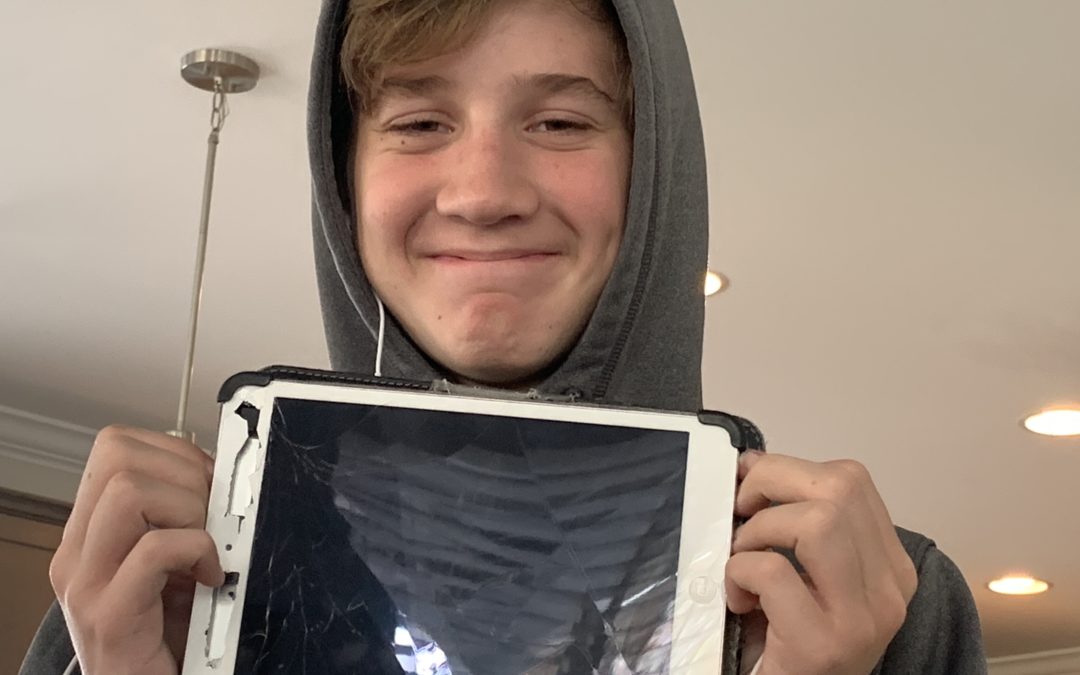Last week, my son’s iPad kissed the concrete. While it still can be sort of used for Netflix, he lamented it was no longer usable for notes in math. His teacher talks too fast for him to type Algebra problems on his Chromebook using a mouse and it was easier to type them on his touch screen. What to do….he needed some way of writing problems in algebra class without having to use his Chromebook. Being the resourceful woman that I am, I reminded him of the spiral bound notebook I purchased at the beginning of the year for JUST SUCH AN OCCASION.
A day without the use of technology would feel altered. Some would call that day “vacation”. For others, it would be torture. Technology is not bad. In fact, the education system, various community groups, and the medical field have found it essential for teaching children, connecting people, and monitoring serious medical conditions in real time. However, my most recent research project left me with sure fire concern for what limitations allow a healthy amount of screen time for kids.
On occasion I get too wrapped up in what post got what likes from which people and I take a step back and regroup. I remind my heart who I am in Christ and the purpose of my post, which usually involves celebrating people that I love. “How evolved,” you say. “What a mature way to view your insta profile,” you say. I pride myself in having 44 years of life experience, cognitive ability and concept of care from which to gather this perspective.
Children and youth often don’t have the same abilities as a middle aged person such as myself. Insecurities during this stage of development complicate the need to navigate the online world. Peer influence is drawn from likes, number of friends, and hundreds of selfies rather than from genuine personal interaction and influence. Forgetting how virtual action has non-virtual affects can lead to avenues of cyberbullying, a lack of general respect, and allows kids to become desensitized to the effect words have on peers. While a gamer finds the thrill of the chemical high, others may feel a false sense of connectivity and fulfillment through social media. During this delicate stage of development social media magnifies the overwhelming desire to be accepted and greases the slippery slope of comparison.
I won’t shock you with talk of radiation emissions from hand-held devises and the thin skulls of children since there hasn’t been enough generations of digital natives for any real data. But we do know electronic use can be highly addictive, can distract kids from actually living life in a real setting, and produces feelings in kids that are as detached and lonely as they often are for adults.
What am I trying to say? First, it’s the job of parents and caregivers to limit the amount of screen time used during the childhood and adolescent stages of development. Second, parents and caregivers must understand the level of responsibility kids can handle, which is limited to say the least. Social media has become a normalcy that is expected in teenage circles. However, you have been given authority by God to make decisions for the kids placed in your care. The greatest danger in the use of technology for kids is their lack of ability to monitor it. In the years I was growing up, kids needed the signal of street lamps turning on to tell us when it was time to head home. Today’s kids need help to monitor their screen time lest they become completely absorbed in the stratosphere of all things digital.
Finally, and possibly most importantly, it would be grossly negligent to talk about the dangers for kids in the technological world without the dreaded mention of pornography. I wanted to give this extremely important topic a post all its own. So, stay tuned and “stay woke”!


Recent Comments